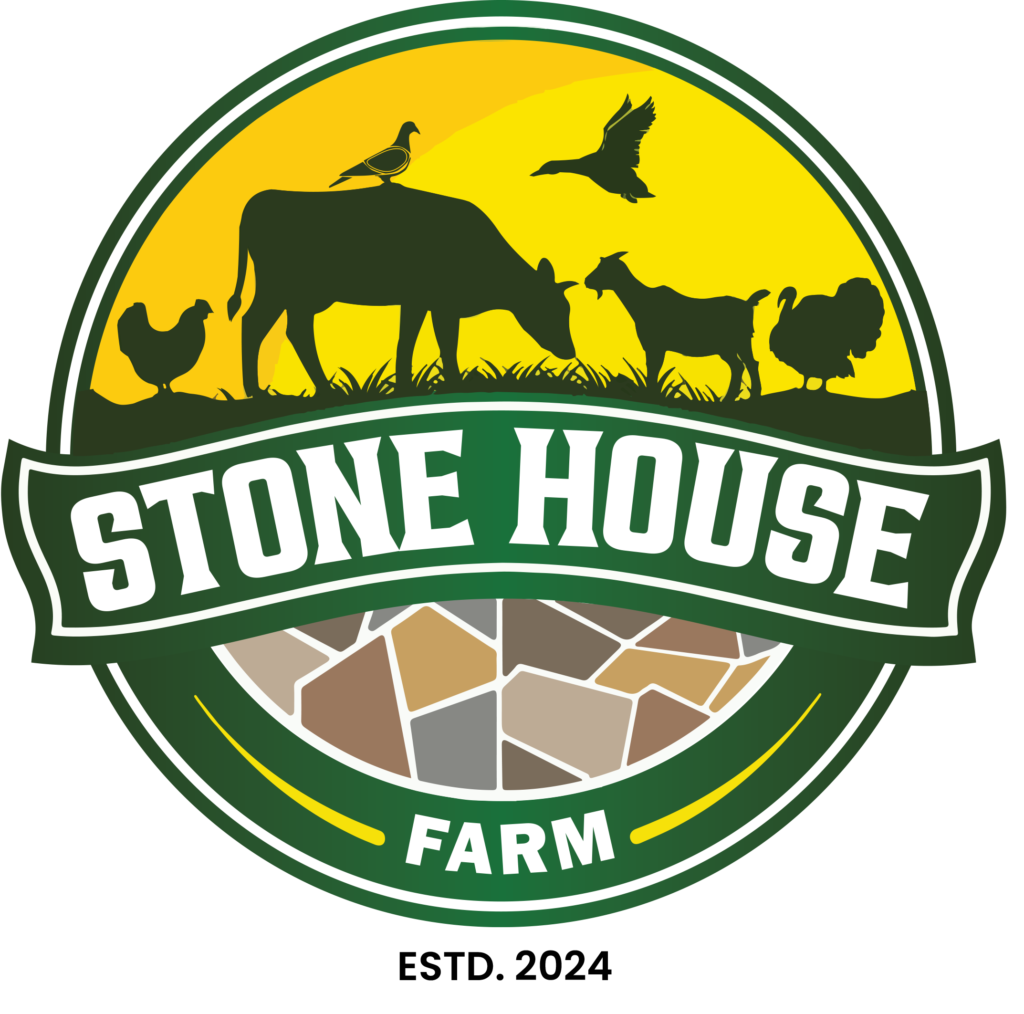Permaculture and Agroecology
Permaculture is a systems approach. It has many branches that include, but are not limited to, ecological design, ecological engineering, environmental design, construction, and integrated water resources management that develop sustainable architecture, regenerative and self-maintained habitat, and agricultural systems modeled from natural ecosystems.
The term permaculture (as a systematic method) was first coined by Australians Bill Mollison and David Holmgren in 1978. The word permaculture originally referred to “permanent agriculture”, but was expanded to stand for “permanent culture,” as it was seen that social aspects were also integral to a truly sustainable system, as inspired by Masanobu Fukuoka’s natural farming philosophy.
Crops on the farm
Crop rotation and companion planting, in an extremely bio-diverse transitional zone, produces a wealth of crops. In addition to human consumption, we try to grow as much of the animal food as possible, so there are areas of sugarcane, reeds and forage species. Some crops are grown to sell e.g. turmeric, chilies, and basil. There are two distinct seasons here in Uganda, the wet and the dry, and the crops change according to these climates. The dry season is cooler and many cold climate vegetables can be grown (eg. broccoli, radish, carrots, chinese cabbage). During the wet, humid season we grow beans, plantain, sweet potato, and maize
How do we fertilize the soil?
Stone house Farm is considered an agricultural recycling center; nothing is wasted, all animal and plant “waste” is put to use. We never burn gardens, and so with the rampant growth of weeds alone we have the base of good fertilizer, which when cut, is left to break down, put in our composting area, or fed to animals to be further “processed” into nutrient rich compost.
We use pig, cow, goats, Rabbits and poultry manure to make compost and fertilizer, which are applied directly to the soil. We also make a liquid fertilizer – “biol” – out of rabbit urine. Some leguminous plants are used for nitrogen fixing.
Animals on the farm
There are goats, cows, pigs, guinea fowl, chickens, ducks, dogs, geese,rabbits, turkeys and lots of birds, including pigeons!
Banana circles
We have introduced growing bananas in circles instead of lines and produces very effective nutrient recycling. All “waste” organic material is placed in the center of each banana circle (i.e. weeds, old banana stalks, sticks, leftover pieces of bamboo). This system is even more effective when combined with animal effluent (e.g. the circle beside the pig pen.) All the manure is washed into the circle to aid the decomposition process and provide fertilizer for the plants. The pigs are “feeding” the bananas, and the bananas are feeding us.
Instead of depending on water and fertilizer, each individual plant draws from the benefits of the banana circle. Other shade-loving plants can be grown beneath the banana. In Stone house Farm we have coffee (Café Arabica – a shade grown, native species). Plants, such as cacao, can be grown between the circles and benefit from the nutrients provided by the system.
Reforestation
Busu village has a history of deforestation. With a history of slash and burn agriculture for shade intolerant cash crops, and later cattle grazing, most farmers have trouble accepting the reasons for forest conservation. They are in some ways reluctant to reforest as they consider it an achievement to have cleared their land for growing pasture. With new knowledge of successful crop associations and topsoil conservation, some are starting to reconsider.
Stone house farm has been reforesting for more than 10 years with varied success. Some years, with the help of consistent rain, there has been a productive survival rate. Other times it has been unpredictable; the dry season in Uganda is sometimes too dry for survival, in the wet season plants get drowned out.
Reforestation in the tropics sounds easy, but when the trees grow quickly, the weeds also grow quickly. It is a continuous battle to establish the trees.
Garbage Reduction
We avoid having processed food at Stone House Farm and avoid all the trash that comes with it. Also avoid disposable cups, plates, or cutlery. Most products are bought in bulk and the containers are reused. We tend to use utensils made from naturally-occurring resources, e.g. wooden plates and cups & spoons and locally handmade Ugandan ceramic and clay bowls.
Paper
A lot of paper is collected and recycled by local women at our workshops on the farm and turned into artisan style, handcrafted beads.
Plastics
Plastic bottles used at the farm are used either to protect young plants against leaf-cutter ants, or to facilitate irrigation; we fill them with liquid fertilizer or water and place them upside down next to fruit trees, as described above.
Water
Our aim is for showers and sinks to have water-saving shower heads and taps, and some of the water is reused. Guests are asked to conserve water and to bring biodegradable soap.
Energy
None of our electricity comes from the national system in Uganda, all our electricity is provided by solar panels. All bulbs are as energy-efficient as possible, and guests are reminded to switch off lights when not in use.
Alternative Technologies
Biogas
We hope to build a biogas system. It uses a long plastic tube and flexible rubber “bladder”, which is placed in a trench and filled with water. Each day we have to “feed” it with animal manure-water and fresh cow manure. The manure ferments and creates methane gas, which can then be used for cooking, lighting, and heating water, and “biol” – a very effective biological liquid fertilizer.
Solar power
Solar power in its raw form is used at Stone house farm for lights and sockets. We also have passive solar security cameras. We have solar panels for the main house.
